Significant milestone in whooping crane recovery
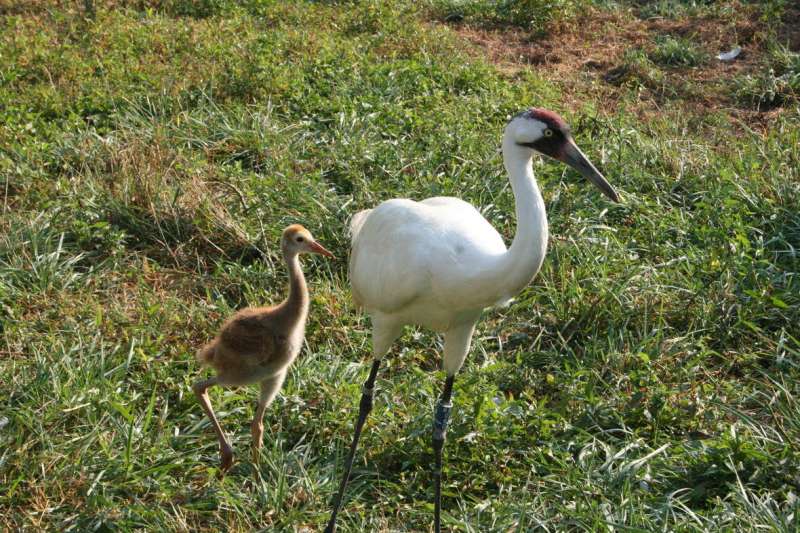
This week marks a significant milestone in the conservation and recovery of the endangered whooping crane. On March 11 and 13, the U.S. Geological Survey's Patuxent Wildlife Research Center transferred its last two cranes of the approximately 75 that were in its flock to other institutions, closing out more than 50 years of the center's whooping crane research and captive breeding success.
Researchers at the center pioneered the science informing much of the birds' recovery to date, including assessing dietary needs, developing breeding methods and techniques for raising chicks, and preparing birds for reintroduction into their natural habitats. Over the years, the program at Patuxent has naturally transitioned to a more operational role of producing chicks for reintroduction. With other institutions capable of filling that role, the USGS has transferred the birds to organizations in North America interested in continuing the captive breeding and reintroduction efforts, allowing the USGS to focus its resources on other species at risk and in need of scientific research.
"Whooping cranes are still endangered, but the overall population has grown more than tenfold in the last 50 years since Patuxent's program began," said John French, a USGS biologist and director of the USGS Patuxent Wildlife Research Center. "The end of the USGS program is an indication of just how far we've come in our research and recovery efforts and is a tribute to the numerous researchers from the U.S. Geological Survey and numerous collaborators and partners who dedicated five decades to help chart the course for the recovery of this iconic species."
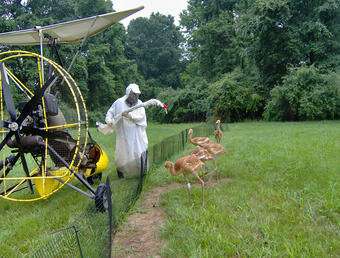
Whooping cranes are North America's largest bird and a longtime symbol of the American conservation movement. They are native to North America and their current population is estimated at more than 700 birds. In 1942, the entire population declined to 22 birds. This decline was primarily due to human actions, such as overhunting and the development of shorelines and farmland that led to habitat loss.
The Start of the Largest Whooping Crane Captive Breeding Program
The captive breeding program began in 1967 when biologists from the U.S. Fish and Wildlife Service captured a young whooping crane and collected 12 eggs from the wild in Canada. All were sent to the Patuxent center, which was then under the USFWS. The center was transferred to the USGS in 1996. The overall conservation goal for the species has been to help establish new populations in places where the large, majestic birds once lived. The Patuxent effort became the world's largest whooping crane captive breeding program, and a model for science-based reintroduction of endangered species.
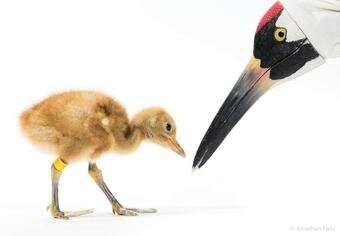
USGS Role in Breeding and Raising Whooping Crane Chicks
"When the staff at Patuxent first got involved in whooping crane recovery, new scientific research was needed on just about every aspect of whooping crane biology," said French. "That research was used to establish captive breeding programs, to develop methods of reintroduction and, more recently, to assess how the reintroduced populations are faring."
Scientists sought ways to increase the number of eggs laid and chicks hatched. In the wild, whooping cranes typically lay two eggs at a time and only one clutch (group) per year. If the eggs don't survive or are lost to predators, a whooping crane may lay a second or even a third clutch that year. In captivity at Patuxent, scientists removed eggs from the parents' nests for incubation in the lab, which encouraged re-nesting and increased the total number of eggs and chicks produced. Sandhill cranes were often used to incubate the extra eggs.
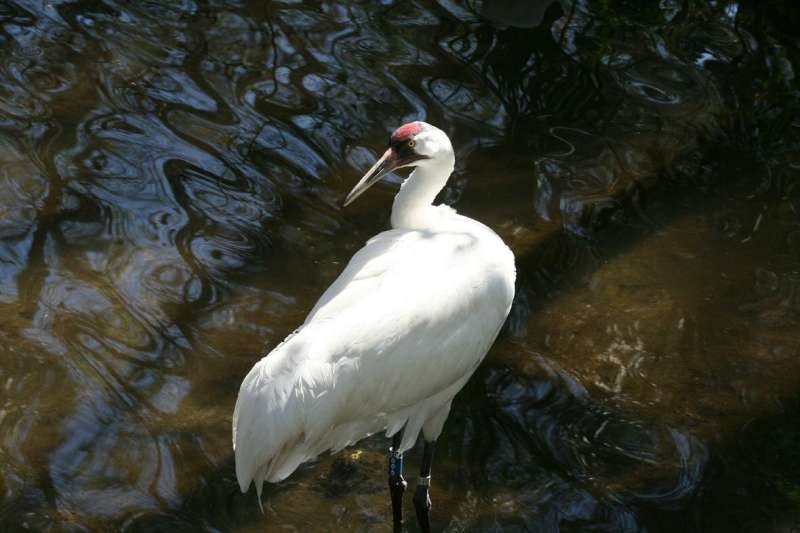
Methods developed at Patuxent for artificial insemination of breeding females have allowed the production of chicks with a healthy genetic heritage and allowed the preservation of genetic diversity in the captive flock.
From the moment a whooper chick hatched, technicians interacted with them only when wearing a crane costume. Costumed technicians taught the chicks how to find food, purred or played brood calls to the chicks like their parents would, and introduced them to wetland habitats. The costume prevented chicks from imprinting on—or attaching themselves to—humans. This is especially valuable after release, as it is beneficial for the chicks to act as natural in their habitat as possible.
Various methods were also developed for preparing whooping crane chicks for reintroduction to the wild. Federal scientists and partners developed and improved the method of training young crane chicks to follow an ultralight aircraft, which was used to teach the fledglings a migration route south for their first winter.
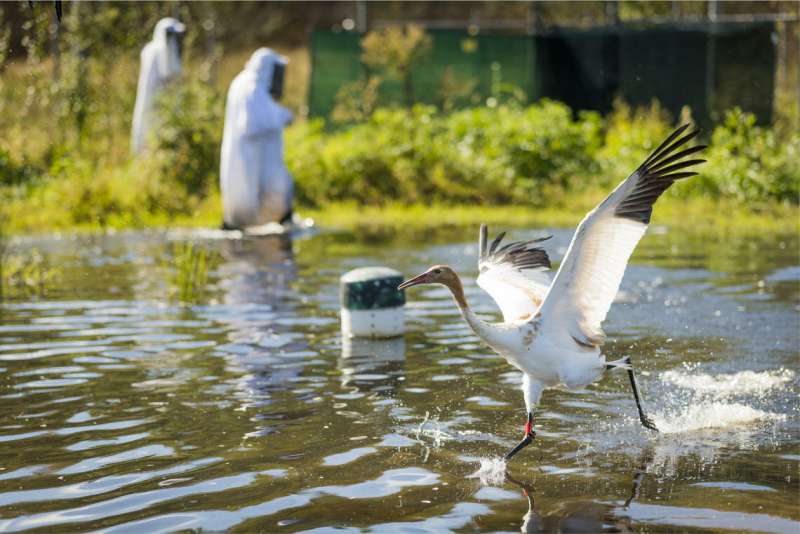
The Next Phase and Transferring Cranes
Patuxent's cranes were transferred to other institutions that can produce chicks for reintroduction. These institutions are the Smithsonian Conservation Biology Institute in Front Royal, Virginia; the White Oak Wildlife Conservation in Yulee, Florida; the International Crane Foundation in Baraboo, Wisconsin; the Dallas, Houston, Abilene and San Antonio Zoos in Texas; the Oklahoma City Zoo in Oklahoma; the Omaha Zoo in Nebraska; the Freeport-McMoRan Audubon Species Survival Center in Louisiana; and the Calgary Zoo and the African Lion Safari in Canada.
Conservation and Recovery Plan
Whooping crane captive breeding for reintroduction in North America is one part of the strategy for conservation and restoration of the species. A joint U.S.-Canada International Recovery Team develops and guides the strategy for whooping crane management, which is detailed in the International Recovery Plan for the Whooping Crane. The team also oversees the management of wild and reintroduced populations of whooping cranes.
Provided by United States Geological Survey

















